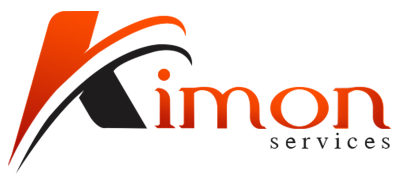Estimated reading time: 8 minutes
Key Takeaways
-
A well-designed customer service FAQ page reduces direct support interactions
by providing instant answers. - Creates a 24/7 self-service resource, enhancing customer experience.
- Empowers customers to troubleshoot issues independently and reduces repetitive queries.
- Boosts brand credibility through clear and transparent information.
- Improves website SEO by addressing common user queries effectively.
Table of Contents
-
Benefits of a Customer Service FAQ Page
-
Key Components of an Effective FAQ Page
-
Design and Navigation Best Practices
-
Organising Support Topics
-
Enhancing User Assistance
-
Self-Service Portal Features
-
Improving Customer Experience
-
Contact Support Integration
-
Maintenance and Continuous Improvement
-
Conclusion
Benefits of a Customer Service FAQ Page
In today’s fast-paced digital world, a well-designed customer service FAQ page is essential for providing
quick and accessible answers to your customers. This centralised hub of information serves as a vital resource
where customers can find solutions to their most common questions, enhancing customer support and improving
the overall customer experience. Let us explore the world of FAQ pages and how to create one
that truly serves your customers’ needs.
1. Improve Customer Support Efficiency
A comprehensive FAQ page addresses common questions, significantly reducing the need for direct customer support
interactions. By providing instant, accurate answers, customers can troubleshoot problems independently without
waiting for a response. This self-service approach not only saves time for your support team but also empowers
customers to find solutions quickly.
2. Enhance Customer Experience
The 24/7 accessibility of a self-service portal offers unparalleled convenience to your customers. Regardless of
time zones or schedules, customers can access the information they need when they need it most. This round-the-clock
availability contributes to a positive customer experience and demonstrates your commitment to customer satisfaction.
3. Reduce Volume of Support Requests
A comprehensive knowledge base minimises the number of direct contact support requests. By addressing frequently
asked questions and common issues, you can significantly decrease the volume of repetitive queries that your
support team handles. This allows your team to focus on more complex or unique customer issues that require
personalised attention.
4. Strengthen Trust and Credibility
Clear, transparent information builds customer trust. When customers can easily find answers to their questions, it
demonstrates your company’s commitment to openness and customer service. This transparency can help strengthen your
brand’s credibility and foster long-term customer relationships.
5. Improve Website SEO
A detailed FAQ page enhances your website’s SEO by effectively answering user queries. Search engines favour websites
that provide comprehensive, relevant content, and an FAQ page filled with common questions and detailed answers can
significantly boost your search engine rankings.
Key Components of an Effective FAQ Page
-
Frequently Asked Questions: Curate a comprehensive list of questions based on customer
feedback and data analysis. -
Knowledge Base Integration: Provide detailed articles and resources within your knowledge
base for in-depth information. -
Help Centre Connectivity: Integrate the FAQ page with your broader help centre to streamline
access to additional support resources.
Design and Navigation Best Practices
Easy Navigation
Organise your FAQ page with clear categories and sections for intuitive browsing. Use descriptive headings and
subheadings to help users quickly locate the information they are seeking. Consider implementing a table of
contents or jump links for longer FAQ pages to enhance navigation.
Search Functionality
Implement a robust search bar to help users find answers quickly. Ensure your search function can handle synonyms,
common misspellings, and related terms to provide the most relevant results. This feature is crucial for users
who prefer to search directly for their specific issue rather than browsing through categories.
Responsive Design
Ensure your FAQ page is mobile-friendly and accessible on all devices. With the increasing use of smartphones
and tablets for online browsing, a responsive design is essential for providing a seamless user experience
across all platforms.
Visual Enhancements
Use visuals like icons or collapsible sections to make navigation engaging and user-friendly. Consider using
infographics, diagrams, or even short video tutorials to explain complex concepts or processes more effectively.
Organising Support Topics
Categorise Related Questions
Group questions under specific topics such as product information, troubleshooting, and service issues. This logical
organisation helps customers quickly identify the section most relevant to their query.
Maintain Logical Structure
Ensure categories are logically structured for fast information retrieval. Consider the user’s journey and organise
topics in a way that follows a natural progression of common issues or inquiries.
Regular Updates
Update support topics regularly based on customer feedback and emerging issues. As your products or services evolve,
so should your FAQ page to reflect the most current information and address new common questions.
Enhancing User Assistance
Incorporate Multimedia Elements
Use images, videos, and diagrams to simplify troubleshooting and clarify complex processes. Visual aids can often
explain concepts more effectively than text alone.
Provide Step-by-Step Guides
Offer detailed instructions and how-to guides for resolving common issues. Break down complex processes into
manageable steps, making it easier for customers to follow along and solve problems independently.
Clear and Concise Language
Write content in straightforward language to ensure easy understanding. Avoid jargon or technical terms that
might confuse customers. If industry-specific terms are necessary, consider providing brief explanations or a glossary.
Self-Service Portal Features
Integrated Self-Service Tools
Provide tools within the self-service portal for customers to initiate and track support inquiries. This integration
allows customers to seamlessly transition from finding information to requesting additional help if needed.
Personalised Support Options
Enable access to personalised resources based on user profiles and previous interactions. This tailored approach
can help customers quickly find relevant information based on their specific product usage.
Comprehensive Resource Access
Link the self-service portal with the knowledge base for extensive support information. This connection ensures
customers have access to a wide range of resources, from quick FAQ answers to in-depth articles and guides.
Improving Customer Experience
Intuitive User Interface
Design the FAQ page with an intuitive layout to enhance usability. Consider user experience principles such as
clear headings, consistent formatting, and easy-to-read fonts to create a pleasant browsing experience.
Fast Load Times
Optimise the page for quick loading to keep users engaged. Slow-loading pages can frustrate users and lead to
abandonment, so ensure your FAQ page loads quickly, especially on mobile devices.
Feedback Mechanisms
Implement feedback options for users to suggest improvements or report unresolved issues. This not only helps
you improve your FAQ content but also shows customers that you value their input and are committed to continuous
improvement.
Analytics Integration
Use analytics to track FAQ usage and identify areas for enhancement. Monitor which questions are most frequently
accessed, where users might be struggling, and how the FAQ page impacts overall support metrics.
Contact Support Integration
Clear Contact Options
Display multiple contact methods such as email, chat, and phone prominently. While the goal is to provide self-service
solutions, it’s important to make it easy for customers to reach out directly if they cannot find the answers they need.
Seamless Transition
Ensure a smooth transition from the FAQ to direct support channels when issues are unresolved. Consider implementing
a system where customer context is carried over to support agents to avoid repetition and streamline the support process.
Accessible Support Paths
Provide easily accessible pathways for customers needing further assistance beyond the FAQ. This could include
prominently placed “Contact Us” links or live chat support throughout the FAQ page.
Maintenance and Continuous Improvement
Regular Content Reviews
Schedule periodic reviews to update the FAQ content based on new service issues and product updates. This ensures
your FAQ page remains current and continues to address the most relevant customer queries.
Monitor Effectiveness
Use analytics and customer feedback to assess the FAQ page’s performance. Track metrics such as page views, time
spent on page, and successful query resolutions to gauge the effectiveness of your FAQ content.
Adapt Strategy
Adjust the FAQ strategy in response to changing customer needs and industry best practices. Stay informed
about evolving customer support trends and be willing to innovate your FAQ approach to meet changing expectations.
Conclusion
A well-structured customer service FAQ page is an invaluable asset for proactive and efficient customer support.
By implementing the best practices outlined in this guide, you can create an FAQ page that not only reduces
operational overhead but also significantly enhances customer satisfaction. Remember, an effective FAQ page is
more than just a list of questions and answers – it’s a dynamic, user-friendly resource that evolves with your
customers’ needs and your business offerings.
Invest time and resources in designing, implementing, and maintaining a comprehensive FAQ page, and you’ll
reap the rewards of improved customer support, increased customer satisfaction, and a more efficient support
process. Your customer service FAQ page is often the first point of contact for customers seeking help –
ensure it represents your commitment to exceptional customer service and support.
By continually refining your FAQ page based on customer feedback and usage data, you’ll create a powerful
self-service tool that benefits both your customers and your support team. Embrace the power of a well-crafted
FAQ page, and watch as it transforms your customer support strategy for the better.
For more information on creating effective FAQ pages, visit
Web Blog on FAQ Pages
for additional insights and best practices.
FAQs
What is the main purpose of a customer service FAQ page?
A customer service FAQ page’s main purpose is to provide quick and accessible answers to common customer
inquiries, reducing repetitive support requests and improving overall customer satisfaction.
How often should I update my FAQ page?
It’s best to update your FAQ page regularly—at least once a quarter or whenever there are product changes,
new features, or emerging customer issues that need to be addressed.
Does an FAQ page help with SEO?
Yes. An FAQ page that succinctly addresses common questions can elevate your search engine rankings,
especially if it includes relevant keywords and addresses user intent effectively.
Should I include multimedia elements in my FAQ page?
Absolutely. Images, videos, and other visuals can significantly enhance user understanding, especially
for complex or technical topics.
What if customers still can’t find what they need?
Ensure you have clear contact support options displayed. While an FAQ page is designed to address
common issues, some customers will still require direct assistance for unique scenarios.







